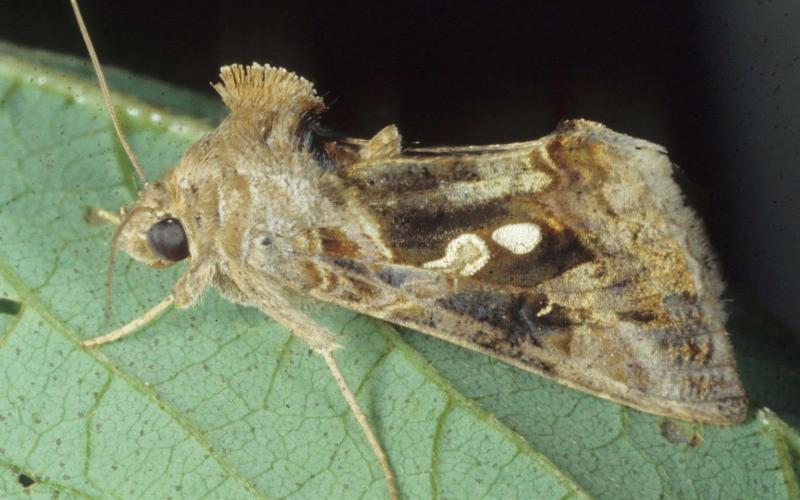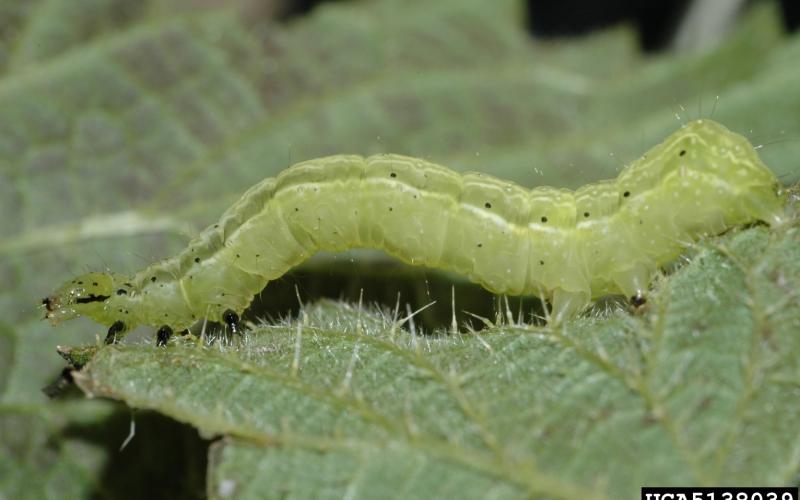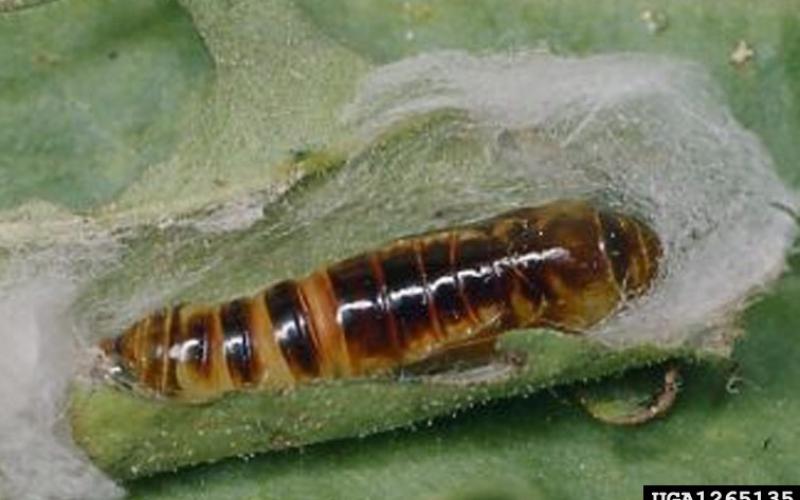Scientific name: Chrysodeixis chalcites Esper
Native range: Europe, Middle East, Africa
At Risk
This species is a major pest in many countries. Some of the key plants at risk in Minnesota include soybean, potato and tomato. Golden twin spot moth has a broad host range and, in addition to the key plants at risk, it also affects other plants grown in Minnesota including clover, alfalfa, corn, cucumber, peppers, green beans, cruciferous vegetables and strawberry. It has also been documented as a potential pest in greenhouses.
Distribution
The golden twin spot moth has been known to occur in southern Ontario, Canada, since 2008 but is not known to occur in the U.S. However, it has been intercepted at U.S. ports of entry hundreds of times. It was also found in association with imported geraniums and eradicated at greenhouses in a number of states in the 1990s.
Biology
Golden twin spot moth may not be able to overwinter in Minnesota but could become a greenhouse pest as well as migrate into the state during the growing season from more southerly locations. Multiple generations will occur within a given year provided that temperatures are warm enough. Small larvae feed on the undersides of leaves while larger larvae will roll leaves together for sheltered feeding and eventually consume most of the leaf. In addition to this defoliation, larvae may also feed upon and damage developing fruits.
Identification
The adult moths have a wingspan of about 1 ½ inches. The forewing is gold/bronze and has two oval silver spots that are similar in size. The hind wing is paler than the forewing and there are two prominent crests on the body behind the head. Larvae are usually pale green in color with a white stripe along each side.
Look-Alikes
Among other things, both adults and larvae of the cabbage looper (Trichoplusia ni) could be mistaken for golden twin spot moth. The cabbage looper is commonly found in Minnesota.
Regulatory Status: Potentially Regulated
Both federal and state regulations may be implemented if the golden twin spot moth is discovered in Minnesota. Regulatory actions may include restricting movement of materials that could harbor life stages of this moth as well as measures to suppress or eradicate any infestations.
What Can Be Done?
The MDA has monitored for golden twin spot moth through both our commodity and pathways surveys. Contact the MDA via email at reportapest@state.mn.us if you suspect an infestation of golden twin spot moth in Minnesota.
Smarty Plants Podcast
 Discover Smarty Plants, the Minnesota Department of Agriculture's podcast that digs into the fascinating world of invasive species. Join expert guests as they share insights and solutions to protect our environment and agricultural resources. Visit Smarty Plants and start listening today.
Discover Smarty Plants, the Minnesota Department of Agriculture's podcast that digs into the fascinating world of invasive species. Join expert guests as they share insights and solutions to protect our environment and agricultural resources. Visit Smarty Plants and start listening today.




